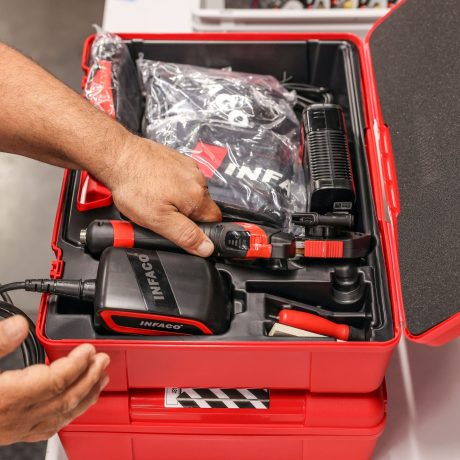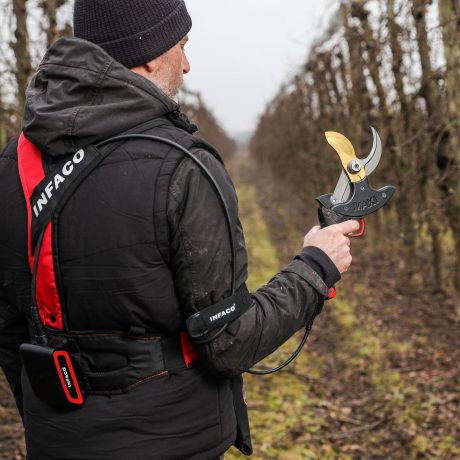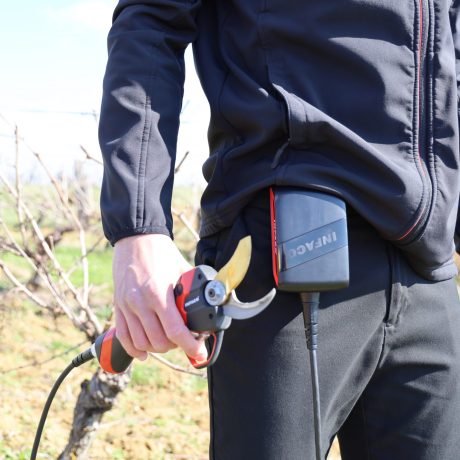

In its article "Why and how to look after your batteries", INFACO raises awareness of the need to store Lithium-Ion batteries. There are two main golden rules to follow:
Winterising a battery is the equivalent of putting it on standby for a long period of time:
If the battery is not used for more than 1 month;
Winter storage ensures that your pruning shears are stored in good conditions, and alsooptimises battery life!

Here is a non-exhaustive list of signs that will help you identify a faulty battery:
In all cases, we strongly advise you not to continue working with a battery that is showing signs of damage.

If you discover that your battery is faulty, do not store it at home. Ideally, place it in a resealable waterproof plastic bag in the carrying case of your tool, then go to your usual distributor as soon as possible to set up the disposal protocol. This means that your battery will be kept by the approved distributor, who will store it in the correct way so that it can be returned to the INFACO factory for recycling.
This procedure is in place in France, with the network of approved distributors. Abroad, each importer follows the regulations of his country and manages the recycling and/or destruction of the batteries.
Once INFACO has collected the defective battery, the Health, Safety and Environment (HSE) team supervises its recycling, scrupulously following the procedures recommended by the battery manufacturers. The battery is stored in a watertight plastic bag (to avoid any contact with another battery) and temporarily placed in a metal drum filled with vermiculite before being taken over by specialist recycling partners. Vermiculite has the virtue of containing any liquid spillage, and the metal drum prevents and contains the risk of fire.
To read the article "Why and how to look after your batteries", click here!